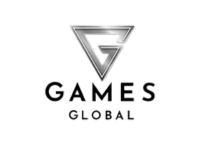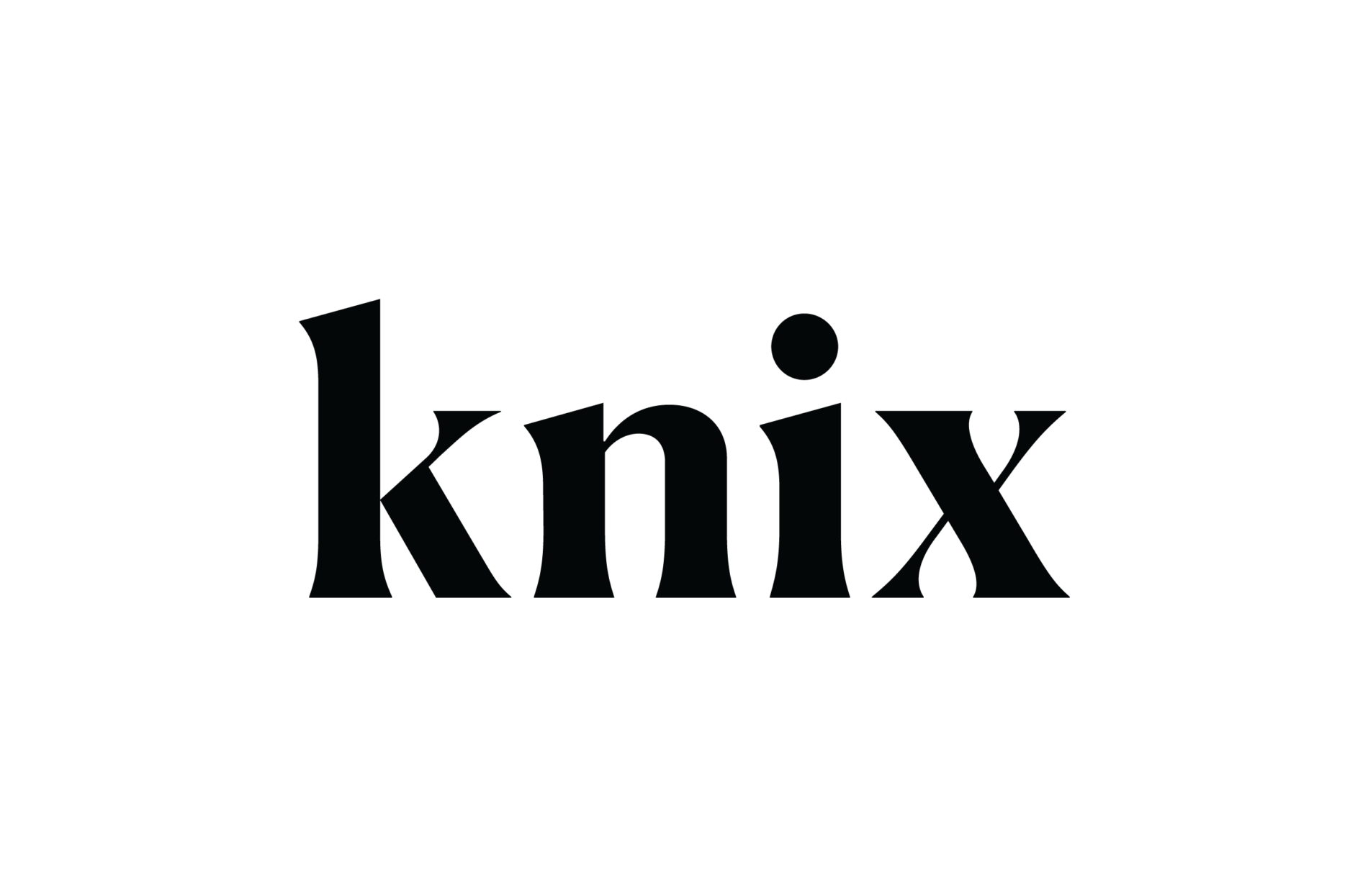Your organization thrives when your people thrive. But to drive success, you’ll want to do more than just attract and retain top talent. You’ll also want to align your team members with organizational goals and inspire them to fully embrace the company’s vision. An effective HR strategy is your secret weapon to make this happen.
A well-crafted HR strategy directly supports your company’s objectives, keeping people at the heart of every decision. When you prioritize employee wellbeing, development, and satisfaction, you create an environment where everyone feels motivated to bring their best efforts to the table.
Building a successful HR strategy takes time and effort, but the payoff—stronger team performance and better organizational outcomes—makes it all worthwhile. In this article, you’ll learn what makes a great HR strategy, how to build one using proven frameworks, and real-life examples of companies that got it right.
What is an HR strategy?
An HR strategy is an organized set of human resources methods designed to support high-performance work and promote the company’s vision, mission, values, and objectives. HR may create a strategy for a single job or a collection of jobs to address specific needs within each department. HR strategies aim to drive overall business success by spurring people to provide high-quality work. In SHRM’s guide on Human Resource strategy, Patrick M. Wright outlines three crucial elements successful HR strategies focus on:
- Have something. What skills, competencies, and abilities can team members offer?
- Feel something. What level of commitment, engagement, and motivation do your people demonstrate?
- Do something. How do your people demonstrate productivity?
<< Create a strategic HR plan for your company with this free template. >>
Key elements of an effective HR strategy
HR strategies can be characterized as either expansive or specified. Expansive HR strategies address the management of an organization as a whole. Specified strategies focus on improving a specific HR function—for example, recruitment, compensation planning, and employee development. While HR strategies differ and are tailored to the unique needs of each organization, they typically include:
- A clear HR mission statement: An HR mission statement defines what objectives you want to achieve. Communicate the mission statement to everyone on the HR team and to key stakeholders.
- Defined organizational culture: A strong organizational culture promotes desired behaviors that create a positive working environment where your people can thrive and dedicate effort to achieving the company’s goals.
- Constant communication: Effective communication from HR minimizes the gap between leadership and the rest of the team. Communicating company plans and seeking team member feedback helps HR teams foster a collaborative work environment and improve employee engagement.
- Talent acquisition and recruitment goals: Effective talent acquisition and recruitment goals and strategies help organizations attract top talent who are a good culture fit and who can help the company reach long-term goals.
- Provisions for positive onboarding and offboarding experiences: HR can create the best first impression for new joiners through a great onboarding experience. A structured offboarding procedure also helps maintain strong relationships with leavers.
- Diverse and inclusive hiring practices: A diverse workforce increases the range of experience, knowledge, and skills your organization has access to. Intentionally implementing diversity, equity, and inclusion (DEI) in the hiring process creates an inclusive experience for all candidates.
- Career mobility and professional development: Only 29 percent of people are happy with their career advancement options. HR leaders can avoid high attrition rates by providing learning and development opportunities and clear career pathing for team members.
- Competitive compensation and benefits packages: With the support of senior leadership, HR teams can build competitive compensation and benefits packages for all roles to attract and retain the best people for their organization.
- Trust and transparency: Employee engagement and loyalty increase when team members feel valued and respected. Prioritizing trust in the organizational culture and transparent communication shows people that they’re valuable to the company’s success.
- Prioritizing employee health and mental wellbeing: About 61 percent of people report burnout at their jobs. Improving work-life balance through flexible work arrangements and encouraging your people to take personal time off will enhance their productivity and morale.
Why HR leaders should care about HR strategy
When HR leaders show a deep understanding of business development and actively contribute to the success of the organization’s goals through their HR strategy, it increases their leadership credibility. This also positions HR as a key driver of business growth.
The importance of a clear HR strategy
An HR strategy guides human resources professionals toward reaching business objectives while aligning with company values. The strategy enables efficient use of the budget and effective management of HR processes. Implementing an HR strategy that focuses on nurturing community, autonomy, people-company value alignment, and team member growth can increase retention, engagement, productivity, performance, and profit.
Benefits of strategic human resource planning
Strategic human resource planning enables companies to visualize and capitalize upon their current strengths and anticipate future challenges. Some benefits of strategic human resource planning are:
- Boosting the bottom line with targeted budget allocation
- Reducing staff turnover
- Increasing team engagement and productivity
- Attracting top talent
HR strategy frameworks
HR leaders use proven frameworks to plan, implement, and evaluate HR initiatives effectively. Choosing the right framework depends on factors like the organization’s current position, desired outcomes, culture, engagement, and industry dynamics.
HR teams don’t have to rely on just one framework at a time. Different HR strategies can work together to support various goals, projects, and teams across the organization. Combining multiple HR strategies means leaders can create a flexible, tailored approach that aligns with both short-term priorities and long-term business objectives.
Here are four effective HR strategy frameworks to consider:
1. SWOT analysis
SWOT analysis is a simple and effective framework for improving HR functions so leaders can develop effective strategies that support business performance. HR leaders use this tool to assess the current state of the HR department, identifying areas for improvement by examining external industry dynamics and internal capabilities.
You can conduct a SWOT analysis when creating a new HR strategy or refining an existing one. This framework has four key components:
- Strengths: Highlight areas where the HR team excels, such as a robust recruitment strategy, effective people management, or a positive company culture that attracts and retains top talent
- Weaknesses: Identify gaps in the HR function, such as limited diversity, equity, and inclusion (DEI) in hiring, skill shortages in the workforce, an ineffective onboarding process, or insufficient learning and development opportunities
- Opportunities: Explore external factors HR can leverage, including emerging technologies, untapped talent pools, and government policies that support team members’ wellbeing
- Threats: Recognize external challenges that could hinder HR operations, such as a shortage of skilled professionals, rapid technological advancements requiring upskilling, or shifting regulatory requirements
To maximize the value of a SWOT analysis, gather and analyze sufficient HR data to pinpoint critical internal and external factors. Use this insight to craft actionable strategies—capitalize on strengths, address weaknesses, seize opportunities, and mitigate threats.
2. Balanced scorecard
Brian E. Becker first applied the balanced scorecard framework to the HR function in his 2001 book, The HR Scorecard. He used this framework to link people strategy and business performance. This strategic planning approach suggests that HR leaders align HR policies with organizational strategy and vision, as well as the needs and expectations of key stakeholders.
The framework enables HR teams to define and communicate strategic HR objectives, determine how they contribute to business strategy, and track the outcome or impact of HR strategies through four operational elements:
- Financial: Measures the effect of HR initiatives on financial performance, such as growth and profitability
- Customer: Tracks HR customer satisfaction, such as how team members, senior leadership, and managers benefit from HR strategy
- Internal process: Checks the efficiency of HR’s internal processes in terms of speed, resource utilization, and productivity
- Learning and growth: Indicates how HR initiatives such as training and talent management improve people’s knowledge and skills
The most beneficial aspect of using a balanced scorecard is that HR leaders can break down high-level strategic goals into measurable HR metrics, objectives, targets, and performance indicators.
3. Deloitte framework
The Deloitte HR strategy framework is a high-impact HR operating model that encourages organizations to position the human resources function as a strategic business partner. According to the framework, HR leaders can achieve this in three phases—defining human capital value with human capital management.
The framework provides 10 steps for HR leaders to define their strategy systematically:
- Understanding the business strategy: Gain clarity on your organization’s goals, offerings, and external market forces to shape HR priorities and align with business objectives
- Defining HR strategy: Create a roadmap that aligns HR functions with organizational goals, leveraging human capital to build a competitive advantage
- Segmenting HR customers: Identify and categorize internal customer groups to tailor HR policies, programs, and services to their unique needs
- Prioritizing HR investments: Allocate resources effectively by evaluating costs, risks, and benefits to focus on initiatives with the highest return on investment (ROI)
- Designing HR services: Streamline or re-engineer HR processes to ensure services are efficient, effective, and aligned with organizational goals
- Identifying the right HR service delivery model: Evaluate and optimize HR systems, processes, and infrastructure to deliver value-driven services that support business objectives
- Establishing the right HR skills and capabilities: Identify skill gaps in your HR team and address them through training, recruitment, or development programs
- Continuously improving the efficiency of HR operations: Regularly assess and enhance HR processes to ensure operational excellence and strengthen value delivery
- Building an HR brand: Showcase HR’s value to stakeholders by gathering feedback, improving performance, and communicating contributions through integrated channels
- Measuring the impact of HR products and services: Use HR analytics to track the effectiveness of HR initiatives in achieving business outcomes and driving organizational success
Deloitte’s framework effectively guides HR leaders to build a digitally connected workplace.
4. McKinsey 7S framework
McKinsey’s 7S framework includes seven interconnected elements that work together to support the overall business strategy in an organization. When HR leaders apply this framework to HR functions, they can identify areas for improvement. The seven key elements are:
- Strategy: The sequence of actions an HR team takes to achieve its goals and objectives
- Structure: How the HR department structure supports communication with each other and other teams
- Systems: Operational and technological systems that define your processes and routines
- Shared value: The core values of the organization that guide all HR actions and influence the other elements in the 7S framework
- Skill: Core competencies of team members that help the organization each its goals and objectives
- Style: The leadership approach HR leaders adopt to inspire their people and get their buy-in on business initiatives
- Staff: Team members the organization requires to reach its goals and how they are trained and managed
How to develop an effective HR strategy
HR leaders can develop a thorough and dynamic HR strategy by:
Carve out time to plan
Dedicate several focused hours to home in on pertinent questions, research external factors, and outline the strategy. Documenting essential information and goals helps pave a smoother path for implementing the strategy.
Define how your HR team delivers value to the organization
Implementing an HR strategy requires significant resources. To justify the HR team’s budget, demonstrate the impact of HR initiatives on the organization’s overall business goals. This involves tracking, quantifying, and reporting your team’s success to senior leadership. For example, if the HR team improves employee performance metrics by 20 percent through a learning and development (L&D) program, it justifies the need for the company to invest more in L&D. Defining the value of HR also lets you stay objective when planning, ensuring your team can deliver on the HR strategy.
Research emerging HR trends
HR leaders can improve performance by identifying opportunities in emerging trends in the HR industry, such as focusing on employee wellbeing, using artificial intelligence and automation, implementing DEI policies, and offering flexible work arrangements. HR teams also need to track industry changes continuously to refine the HR strategy as necessary.
Create a checklist
Developing an HR strategy plan can feel overwhelming—there is a lot of information to include in such a comprehensive document. Breaking the task into smaller categories by drafting a checklist enables HR professionals to develop a well-rounded strategy with all the essential components.
<<Download and use this free HR strategy checklist.>>
Make a timeline
The timeline identifies goals that HR leaders aim to reach throughout the year and in the long term. Routinely reassessing milestones can help companies stay on track while adjusting to unpredictable changes in the market.
Leave room for adjustments
An HR strategy is a long-term plan, but it can be agile in how it responds to new opportunities, challenges, or policy changes. If teams face regulatory changes, technological advancements, organizational changes, or unexpected results, effective HR teams refine specific actions within the strategy to better align with their current situation.
Let’s say your organization is a manufacturing company adopting a new AI-powered inventory management software. You can shift your HR strategy to focus on change management and upskilling team members and refine performance management metrics to evaluate people’s ability to use the software.
Train your HR team to fill skills gaps
A competent HR team with business acumen, HR technology expertise, and soft skills is the foundation for designing and implementing an effective HR strategy. Evaluate your HR team members and identify skills gaps they can bridge, prioritizing skills that align with the organization’s goals.
Work with your people to develop personalized learning and development plans that will improve their knowledge, bring value to the organization, and build employee satisfaction by supporting career development.
<<Build an actionable HR plan with this free HR strategy presentation template.>>
Best practices for implementing an HR strategy
No one can predict how and how often the market and needs of the company will change. But, staying proactive can keep you one step ahead and ready to pivot at the drop of a hat. These guidelines can help build a proactive HR strategy:
- Work with other company leaders. Every successful HR strategy aligns with the company’s overall business strategy. It serves as the foundation of a people-focused business strategy and requires the collaboration of HR and other leaders from across an organization to adapt to unforeseen challenges.
- Secure your budgets. Allocating a budget to HR programs is critical. Work with your finance team to secure a budget and ensure your programs have the financial support they need to be successful.
- Align with organizational goals. Understanding your organization’s vision, business goals, and strategies will allow you to implement the right HR initiatives at the right time. Communicate the HR strategy with senior leadership and work with them to fully align it to organizational goals.
- Determine strategic workforce planning and development needs. Evaluate the organization’s workforce to determine whether the company has the talent it needs to reach its goals. If necessary, recruit new people, upskill team members, and leverage succession planning to ensure smooth operations during transitions for key leadership positions.
- Encourage cross-team collaboration and transparency. The best people strategies support cross-team collaboration, liquid teams, and transparency. This approach nurtures trust and team building. It also enables companies to shift gears quickly and leverage their workforce’s skill set, avoiding the need for large-scale layoffs and massive recruitment efforts with every market change.
- Constantly review your strategy. To keep up with changing business needs, it’s crucial to review your strategy frequently. This will enable you to identify elements to update and adjust KPIs when necessary.
How can HR tech support strategic human resource management?
Without technology, HR’s ever-evolving nature can leave us feeling like we’re juggling a dozen balls in the air at once. HR tech can streamline processes, helping companies improve operational efficiency, removing the burden of administrative tasks, and allowing people to refocus on strategic, higher-level duties.
HR technology can assist strategic human resource management by:
- Automating processes, storing data in the same place, and making information easier to access
- Removing human errors and biases
- Collecting data via HR analytics to provide greater capacity for evaluation and improvement
Examples of effective HR strategies
About 49 percent of company executives agree that HR leaders are able to contribute to business outcomes through their HR strategy. Top companies such as Games Global, Meta, and Netflix successfully demonstrate tangible correlations between their HR strategy and business success. Let’s look at the HR strategies of these companies:
1. Games Global

Games Global’s HR strategy involves testing out new HR processes and initiatives in a sandbox environment before implementing them. The company embraces a “work from office first” approach believing that people contribute best to the organization’s goals when they collaborate in person with other team members.
Games Global prioritizes workforce planning, using a workforce planning module within their HR software to track the number of positions, job grades, and the number of people working in each type of job. This strategy helps the company determine the right amount of talent to support its business goals.
2. IDH

IDH operates in 15 countries and time zones and creates a sense of “oneness” for all its people through transparent communication. The company uses their HR software’s centrally accessible dashboard for advertising open positions, recognizing people’s accomplishments, and announcing birthdays and new hires. The company is also incredibly detail-oriented, so they test out new processes in a sandbox before rollout.
3. Knix

Knix is an intimate apparel brand with a mission to inspire everyone to live unapologetically free. The company’s HR strategy drives its mission by focusing on creating a diverse and inclusive workplace. Knix’s people-first strategy focuses on using a DE&I dashboard in its HR software to track diversity goals and get real-time diversity data on its workforce. Knix describes this as critical for diverse thought and business success.
The company’s people management team also uses data from their HR software to nurture their leaders. They compile and share leadership scorecards that score people on leadership skills, team turnover, etc. These insights enable Knix’s people team to provide leaders with areas for improvement.
4. Colgate
Colgate’s HR strategy creates a company culture that encourages teamwork amongst departments and working towards a common objective. The company emphasizes rewarding team and individual excellence and believes in building an entrepreneurial mindset and innovative thinking. Their HR strategy generally focuses on establishing a common interest between team members and key stakeholders so everyone contributes to its success.
5. Meta
Facebook’s success is largely driven by its substantial focus on company culture. Lori Goler, the company’s Vice President of People, reveals that the culture strongly emphasizes Facebook’s mission, which is to connect people globally. The company’s HR strategy emphasizes a mission-focused company culture, playing to team members’ strengths, supporting life outside of work, having an authentic boss, and expecting people to take initiative to achieve company goals.
6. Netflix
Netflix’s HR strategy involves attracting, retaining, and motivating the best people to work for the company. At the heart of the strategy are five key tenets:
- Hire, reward, and tolerate only “fully formed adults”
- Tell the truth about team members’ performance
- Managers are responsible for creating great teams
- Leaders are responsible for creating the company culture
- Good talent managers think like innovators and business people first and like HR people last
When it comes to performance management, Netflix prefers informal conversations over formal reviews, encouraging managers to have regular conversations about performance.
Strengthen company culture with a comprehensive HR strategy
HR strategies are the bedrock for successful HR processes, enabling organizations to function seamlessly and prepare for potential disruption. Intentionally planning recruitment, hiring, and training and development practices to elevate the employee experience can ultimately nurture a healthy company culture of satisfied team members.
<<Build a clear, actionable HR plan with this free HR strategy presentation template.>>
HR strategy FAQs
What is an HR strategy plan?
An HR strategy plan paints a picture of where your organization is currently and helps identify how to reach your goals. Consider using a SWOT analysis to help evaluate your organization’s goals, create new ones, and match the right people to the roles that best utilize their skill sets. HR strategy plans can also help you determine which new positions to open and what kinds of programs will support your people as your company evolves.
Recommended For Further Reading
What are the 5 P’s of strategic HRM?
The 5 P’s of strategic Human Resource Management is a framework that organizations use to achieve business success through effective human resource management. The elements of this framework are:
- Purpose: The goals and objectives of the organization that guide HR operations and practices
- Principles: The core values and culture that influence the organization’s approach to managing its people
- Processes: The specific HR activities that contribute to the business’s strategic goals (for example, recruitment, onboarding, and succession planning)
- People: The organization’s team members and how their diverse capabilities, skills, and potential help the business
- Performance: The measurable outcomes of implementing HR strategies that align with business goals
What is a successful HR strategy?
A successful HR strategy positions the human resources function as a strategic partner in the organization and fully aligns with business goals. It includes key elements such as a clear mission statement, employee development strategies, and diverse hiring practices, which ensure HR helps the company achieve its goals.
